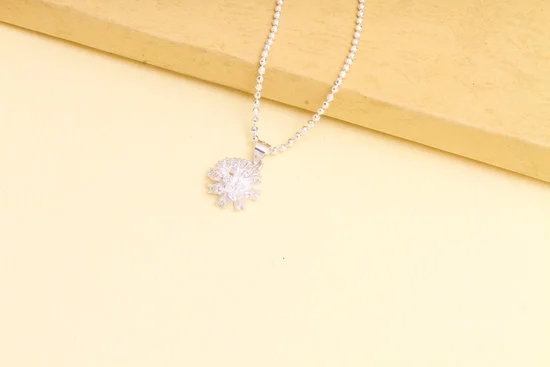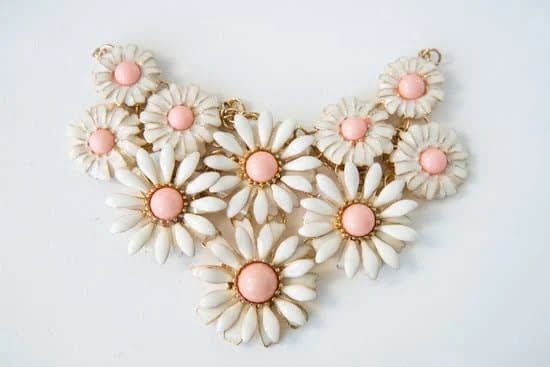Porcelain beads and jewelry are a beautiful and versatile medium for creating stunning wearable art. In this article, we will explore the process of making exquisite porcelain beads and using them to craft unique jewelry pieces.
From understanding the materials needed to firing and glazing techniques, we will take a comprehensive look at every step involved in creating porcelain beads. Additionally, we will delve into creative ideas for incorporating porcelain beads into your jewelry designs and tips for caring and maintaining your porcelain jewelry.
Porcelain, known for its delicate appearance and strength, is a type of ceramic material that has been used for centuries to create various decorative items, including beads and jewelry. With the right tools and techniques, anyone can learn to make their own porcelain beads and design one-of-a-kind jewelry pieces. Whether you’re a seasoned artisan or a beginner, this article will provide you with the knowledge and inspiration to explore the world of porcelain bead making.
From forming the beads to designing intricate patterns and motifs, there are endless possibilities when it comes to creating porcelain beads. The beauty of porcelain lies in its ability to hold intricate details and vibrant colors, making it an ideal medium for crafting eye-catching jewelry. So let’s dive into the fascinating world of porcelain bead making and discover how you can create wonderful pieces of wearable art that showcase your creativity and style.
Understanding the Materials Needed for Porcelain Bead Making
When it comes to making beautiful porcelain beads and jewelry, understanding the materials needed is crucial. Porcelain beads are known for their delicate and elegant appearance, making them a popular choice for jewelry makers. The key materials needed for porcelain bead making include porcelain clay, a kiln, glazes, shaping tools, and firing equipment.
To begin with, the most essential material for creating porcelain beads is the porcelain clay itself. This type of clay is known for its fine texture and ability to be shaped into intricate designs. It’s important to choose high-quality porcelain clay that is suitable for bead making in order to achieve the best results.
In addition to porcelain clay, a kiln is necessary for firing the beads. The kiln will heat the clay at high temperatures, allowing it to harden and become durable. Glazes are also an important material needed for porcelain bead making as they add color and a glossy finish to the beads. There are various types of glazes available in different colors and textures to suit different design preferences.
Shaping tools such as molds, cutters, and carving tools are essential for creating unique designs and patterns on the beads. These tools allow artisans to experiment with different shapes and textures, adding depth and dimension to the finished pieces. Lastly, firing equipment such as tongs and shelves are required to safely handle the beads during the firing process. Understanding these materials and how they work together is essential for creating stunning porcelain beads and jewelry pieces.
Step-by-Step Guide to Creating Porcelain Beads
Porcelain beads are a beautiful and versatile option for creating unique jewelry pieces. Whether you are a beginner or an experienced jewelry maker, learning how to make wonderful porcelain beads and jewelry can be a rewarding and enjoyable process. In this section, we will provide a step-by-step guide to creating your own porcelain beads, from preparing the material to firing the finished pieces.
To begin making porcelain beads, you will need some essential materials and tools. These include porcelain clay, a rolling pin, bead molds (if desired), carving tools, a kiln for firing the beads, and various shaping tools such as toothpicks or skewers. It is important to use high-quality porcelain clay specifically formulated for bead making to ensure the best results.
Once you have gathered your materials, it’s time to start creating your porcelain beads. The process begins by working the porcelain clay into a smooth and even texture. Then, you can use the rolling pin to flatten the clay to your desired thickness. Next, use bead molds or hand-shaping techniques to form the clay into bead shapes. You can also get creative with carving tools to add textures or designs to the surface of the beads.
| Materials Needed for Porcelain Bead Making | Tools Needed |
|---|---|
| Porcelain clay | Rolling pin |
| Bead molds | Carving tools |
| Kiln for firing | Shaping tools (toothpicks or skewers) |
After shaping your beads, they will need to be fired in a kiln at the appropriate temperature according to the instructions provided with your specific type of porcelain clay. This will ensure that the beads become strong and durable once fired. Once cooled, you can then move on to glazing and decorating your porcelain beads before assembling them into stunning jewelry pieces.
Learning how to create porcelain beads opens up endless possibilities for designing unique jewelry that reflects your personal style and creativity. With practice and experimentation, you can develop your own techniques and signature design elements that set your porcelain bead jewelry apart from mass-produced pieces.
By following these step-by-step guidelines, you will be well-equipped to create beautiful porcelain beads that can be incorporated into stunning handmade jewelry pieces. Whether you choose simple and elegant designs or more elaborate styles with intricate details, working with porcelain beads allows for endless opportunities for creativity in jewelry making.
Techniques for Decorating and Designing Porcelain Beads
Porcelain beads are a popular choice for jewelry making due to their delicate and elegant appearance. Decorating and designing porcelain beads can be a fun and creative process, allowing you to customize your jewelry pieces to your liking. There are various techniques that you can use to decorate and design porcelain beads, from simple patterns to intricate designs.
One popular technique for decorating porcelain beads is using underglazes or overglazes. Underglazes are applied before the first firing of the beads, while overglazes are applied after the first firing. This allows for greater flexibility in creating intricate designs, as the colors will not mix during firing. You can use brushes, sponges, or even fine-tip applicators to create detailed designs on the surface of the beads.
Another technique for decorating porcelain beads is using decals or transfers. These are pre-designed images that can be transferred onto the surface of the beads before firing. Decals come in a variety of designs, from floral motifs to geometric patterns, allowing you to easily add visual interest to your beads.
In addition to underglazes, overglazes, decals, and transfers, you can also incorporate other decorative elements into your porcelain bead designs such as gold or silver luster. These metallic finishes can add a touch of luxury and sophistication to your jewelry pieces. Experimenting with different decorative techniques will allow you to create unique and stunning porcelain bead jewelry that reflects your personal style.
| Porcelain Bead Decorating Techniques | Description |
|---|---|
| Underglazes/Overglazes | Applying colors before or after firing for detailed designs. |
| Decals/Transfers | Pre-designed images transferred onto the surface before firing. |
| Metallic Finishes | Incorporating gold or silver luster for added luxury. |
Tips for Firing and Glazing Porcelain Beads
Firing and glazing porcelain beads is an essential step in the bead making process that adds a beautiful finish to your creations. The firing process is what gives porcelain its strength and durability, while glazing adds color and shine to the beads. Here are some tips for successfully firing and glazing your porcelain beads:
- Prepare Your Kiln: Before firing your porcelain beads, make sure your kiln is clean and free of any debris. Set the temperature according to the specifications of the clay body you are using.
- Use Proper Ventilation: When firing and glazing porcelain beads, it’s important to have proper ventilation in your workspace to avoid inhaling any harmful fumes from the materials.
- Apply Glaze Carefully: When applying glaze to your beads, use a soft brush to ensure even coverage. Be mindful of any drips or excess glaze that could affect the final look of your beads.
Achieving the right temperature and timing during the firing process will ensure that your beads come out strong and beautifully finished.
- Ramp Up Slowly: Gradually increase the temperature in your kiln to allow moisture from the clay to evaporate slowly. This helps prevent cracking or warping of the beads.
- Cool Down Gradually: After reaching the desired temperature, allow the kiln to cool down slowly before removing the beads. This gradual cooling process prevents sudden temperature changes that can cause stress on the beads.
- Test First: It’s always a good idea to test different firing schedules and glaze combinations on sample pieces before committing to a full batch of beads. This way, you can experiment with different techniques and find what works best for your specific materials and designs.
By following these tips for firing and glazing porcelain beads, you can create stunning jewelry pieces with a professional finish that will last for years to come.
How to Assemble Porcelain Beads Into Stunning Jewelry Pieces
Once you have successfully created your beautiful porcelain beads, the next step is to assemble them into stunning jewelry pieces. Here’s a step-by-step guide on how to turn your porcelain beads into gorgeous and unique jewelry:
1. Gather your materials: Before you start assembling your jewelry, make sure you have all the necessary tools and materials. This may include jewelry wire, clasps, jump rings, crimp beads, and any other findings you would like to incorporate into your design.
2. Plan your design: Take some time to sketch out or plan the layout of your jewelry piece. Consider the size and shape of your porcelain beads, as well as any additional beads or components you want to include in your design.
3. Stringing the beads: Once you have a clear design in mind, it’s time to start stringing the porcelain beads onto the jewelry wire. You can use different bead patterns and spacing to create visual interest and variety in your piece.
4. Adding findings: After stringing the beads, add any necessary findings such as clasps or jump rings to complete the assembly of your jewelry piece.
By following these steps, you can transform your handmade porcelain beads into stunning and unique jewelry pieces that are sure to impress.
Now that you know how to assemble porcelain beads into stunning jewelry pieces, let’s explore some creative ideas for incorporating these one-of-a-kind beads into your designs”.
Creative Ideas for Incorporating Porcelain Beads Into Your Jewelry Designs
When it comes to incorporating porcelain beads into your jewelry designs, the possibilities are endless. From simple and elegant pieces to more elaborate and unique designs, there are numerous creative ideas you can explore to make stunning jewelry using porcelain beads.
Layered Bracelets
Create a trendy and stylish look by making layered bracelets using different shapes and sizes of porcelain beads. Mix and match colors and textures to add visual interest to your design. Consider combining porcelain beads with other materials such as metal or glass for a more eclectic look.
Statement Necklaces
Make a bold statement with a one-of-a-kind necklace featuring large, eye-catching porcelain beads. Experiment with asymmetrical designs or create a focal point with a standout pendant made from porcelain. Be sure to pay attention to the weight of the necklace so that it is comfortable to wear while still making an impact.
Dangle Earrings
Add a touch of elegance and sophistication to your jewelry collection by creating dangle earrings using delicate porcelain beads. Consider incorporating other elements such as Swarovski crystals or pearls for added glamour. Experiment with different lengths and shapes to create unique, eye-catching earrings that will be sure to turn heads.
By exploring these creative ideas for incorporating porcelain beads into your jewelry designs, you can elevate your creations and offer truly unique pieces to your customers or enrich your personal collection.
Caring for and Maintaining Porcelain Jewelry
Proper Storage
To ensure the longevity of your porcelain jewelry, it is important to store them properly. Porcelain beads and jewelry should be stored in a soft pouch or a jewelry box with compartments to prevent them from getting scratched or damaged. Avoid storing them in direct sunlight or exposing them to extreme temperatures, as this can cause the porcelain to become brittle and break easily.
Cleaning and Maintenance
Porcelain jewelry should be cleaned regularly to maintain its luster and beauty. Use a soft, damp cloth to gently wipe the surface of the beads and jewelry. Avoid using harsh chemicals or abrasive cleaners as they can damage the delicate surface of the porcelain. It is also recommended to remove porcelain jewelry before engaging in activities such as swimming or exercising, as exposure to sweat and chlorine can cause damage.
Preventative Care
To prevent chips and cracks in your porcelain beads and jewelry, it is important to handle them with care. Avoid dropping or knocking them against hard surfaces, as porcelain is fragile and can easily break upon impact. When wearing porcelain jewelry, be mindful of activities that may put undue stress on the pieces, such as heavy lifting or vigorous movements. By taking these preventative measures, you can enjoy your beautiful porcelain jewelry for years to come.
By following these tips for caring for and maintaining your porcelain beads and jewelry, you can ensure that they remain exquisite and stunning for years to come. Proper storage, regular cleaning, and preventative care are essential for preserving the beauty of your porcelain jewelry collection.
Conclusion
In conclusion, the art of making porcelain beads and jewelry is a beautiful and versatile craft that offers endless opportunities for creativity. Understanding the materials needed for porcelain bead making and following a step-by-step guide can result in stunning pieces that are unique and truly one-of-a-kind. By learning techniques for decorating and designing, as well as firing and glazing porcelain beads, jewelry makers can take their creations to the next level.
Assembling porcelain beads into stunning jewelry pieces is a fun and rewarding process. Whether it’s creating earrings, necklaces, bracelets, or other accessories, the possibilities are limitless. With creative ideas for incorporating porcelain beads into designs, artisans can make statement pieces that are sure to stand out. The keyword “how to make wonderful porcelain beads and jewelry” illustrates the attention to detail required in this craft.
Finally, caring for and maintaining porcelain jewelry is essential in preserving its beauty over time. By following proper cleaning and storage techniques, individuals can enjoy their handmade pieces for years to come. With dedication, practice, and a passion for creativity, anyone can master the art of working with porcelain beads and create stunning jewelry that will be cherished for generations to come.
Frequently Asked Questions
How Do You Make Porcelain Beads?
Porcelain beads are made by shaping the porcelain clay into the desired bead shape, often using a mold for consistency. The beads are then fired in a kiln at high temperatures to harden them and give them that classic smooth finish.
How Do You Glaze Ceramic Beads?
Glazing ceramic beads involves applying a glaze to the bisque-fired beads, which is a process of firing the clay once before adding the glaze. The beads are then fired again at a lower temperature to fuse the glaze onto the surface, creating a glossy or colorful finish.
How Are Beads Made Out Of?
Beads can be made out of a wide variety of materials such as glass, wood, plastic, metal, crystal, and even natural materials like stone or bone. Each material has its own unique properties and can be shaped and formed into beads through processes like molding, carving, or casting.

Welcome to my jewelry blog! My name is Sarah and I am the owner of this blog.
I love making jewelry and sharing my creations with others.
So whether you’re someone who loves wearing jewelry yourself or simply enjoys learning about it, be sure to check out my blog for insightful posts on everything related to this exciting topic!





